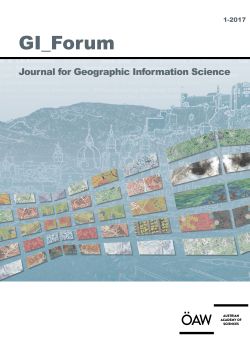
GI_Forum 2017, Volume 5, Issue 1, pp. 157-165, 2017/06/30
Journal for Geographic Information Science

Fast and efficient humanitarian assistance delivered to refugees or internally displaced persons requiresup-to-date reliable information about the situation on-site and the local/regional context. The usage of Earth observation data (acquired from space, aerial and ground platforms) for emergency and crisis mapping has greatly increased during recent years. This paper presents a broad overview of recent trends and achievements in this domain, ranging from satellite-based emergency mapping in the Copernicus domain and related initiatives, to crowd-sourced geospatial information and mapping NGOs, and a dedicated Earth observation-based single-user information service. Examples of best practice presented at a workshop complement the discussion of this wide range of activities for geo-humanitarian action.
Keywords: Humanitarian action, refugee crisis, emergency, mapping, satellite, Copernicus